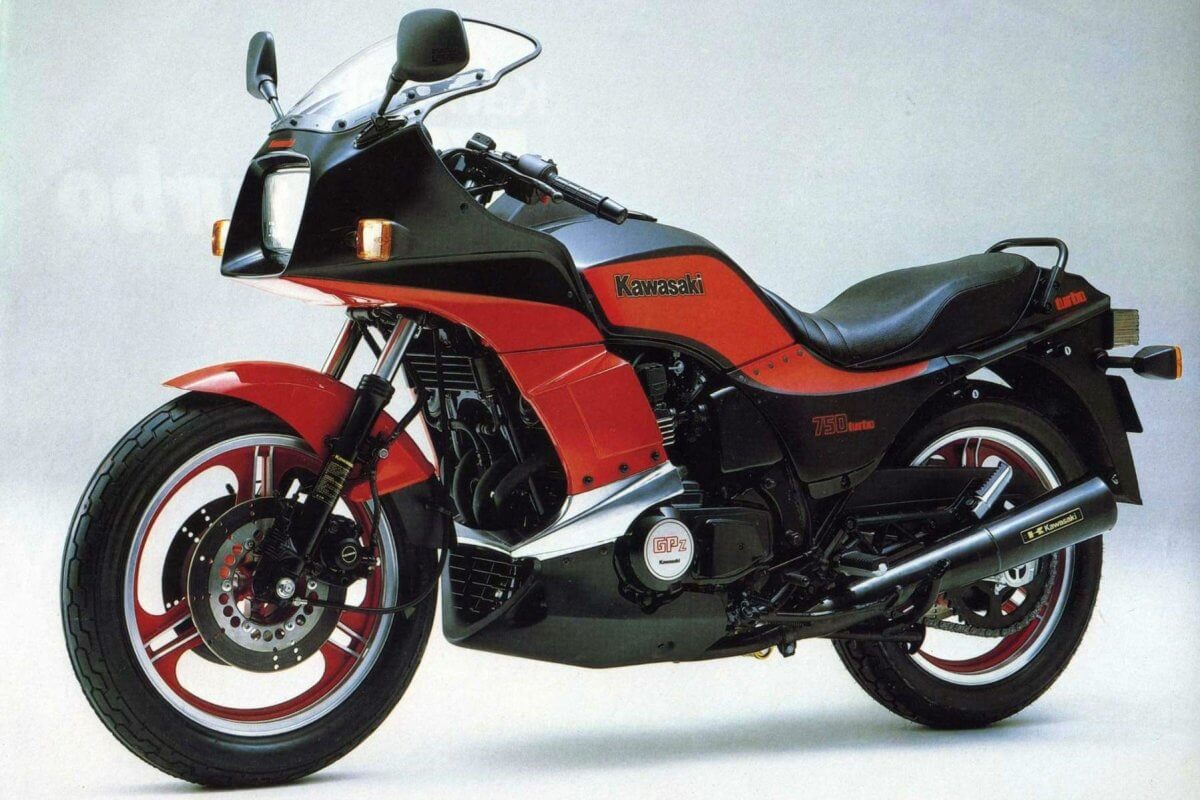Part 2: FORCED-INDUCTION PRODUCTION MOTORCYCLES

In Part 2 we continue looking at more forced-Induction Production Motorcycles
Suzuki XN85 Turbo (1983)
Suzuki’s attempt at capturing the turbo crowd was the XN85 – the “85” being the engine’s horsepower. Suzuki had probably thought about keeping the boost low in order to reduce turbo lag, thus the 673cc bike could not match the Honda CX650 and Kawasaki GPz750 Turbo’s performance. Additionally, issues with reliability and complexity made it an unpopular choice. The XN85 was subsequently replaced by the GS750ES in 1984.

Suzuki XN85 Turbo - Courtesy of silodrome.com
Kawasaki GPz750 Turbo (1984)
Maybe Kawasaki took a longer time to develop their turbocharged production motorcycle because the GPz750 Turbo was released after the rest had ceased production. Kawasaki did not just bolt on a turbo to the standard GPz750 like the Z1R-TC, the bike was a fully-developed model. Consequently, the GPz750 Turbo had electronic fuel injection, stronger gearbox internals, a different oil pan with an extra oil scavenging pump and a stiffer Unitrak shock linkage. With 112hp, it reached a top speed of 148mph. Kawasaki claimed it to be the “World’s Fastest Production Motorcycle.”

Kawasaki GPz750 Turbo - Courtesy of motorcycle.com
Kawasaki Ninja H2R (2015)
Kawasaki said they had wanted to wake up a “sleeping” motorcycle industry when the Ninja H2 was introduced, and boy, did they catch other manufacturers napping. Kawasaki decided to go with the supercharger instead of the turbocharger to completely avoid turbo lag issues. As such, the Ninja H2’s supercharger is driven off the crankshaft, instead of the exhaust gas pressure. the track-only Ninja H2 is a 326hp (with ram air) beast. World SuperSport rider Kenan Sofluoglu took one to 250mph (400km/h) with only race gas and no other modification to the bike.

Kawasaki Ninja H2R Carbon - Courtesy of bikeandmotor.com
Kawasaki Ninja H2 (2016)
The Kawasaki Ninja H2 is the road-going version of the supercharged monster. In view of this, peak horsepower has been reduced to 210hp (with ram air). That may seem below the norm of 1000cc sportbikes, but it is the bike’s acceleration than top speed (which is capped at 299km/h anyway).

Kawasaki Ninja H2R Carbon - Courtesy of bikeandmotor.com
Kawasaki Ninja H2SX (2018)
Rather than limiting the Ninja H2’s scope, Kawasaki introduced the Ninja H2SX sport-tourer. As a machine that is more practical (if you could call a supercharged bike that) for long-distance riding and the daily commute, the new bike has a larger fairing and windscreen, upright riding position, more comfortable seats and luggage.

Kawasaki Ninja H2SX - Picture from kawasaki.com